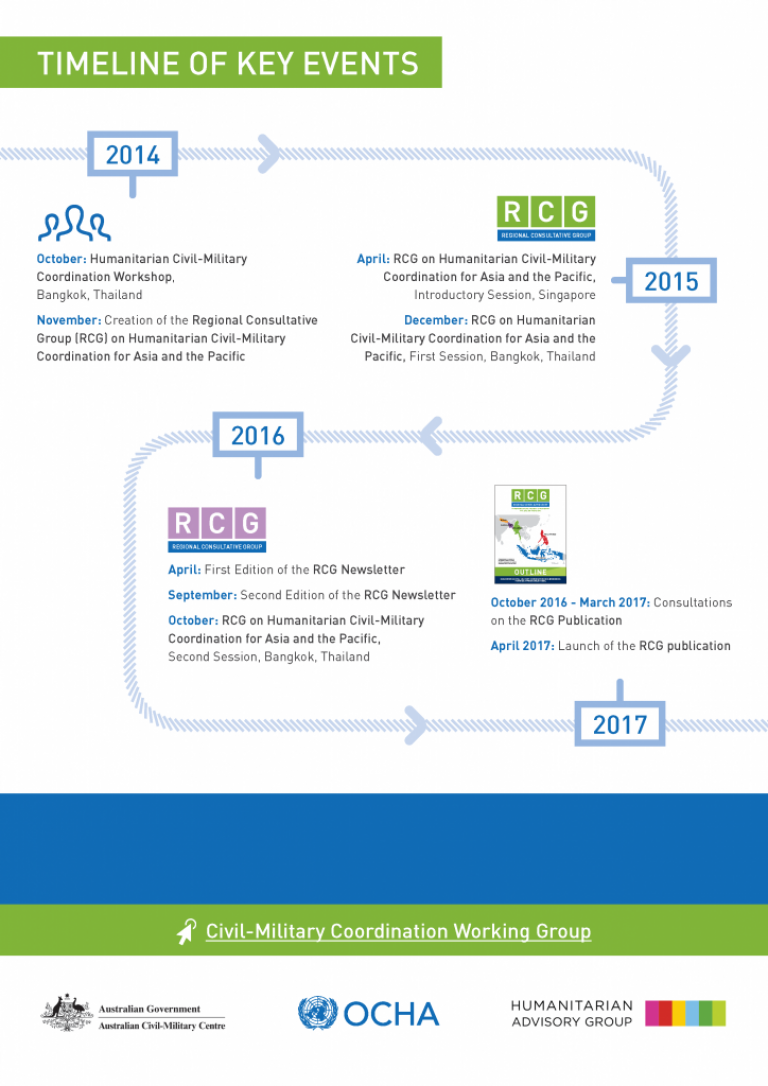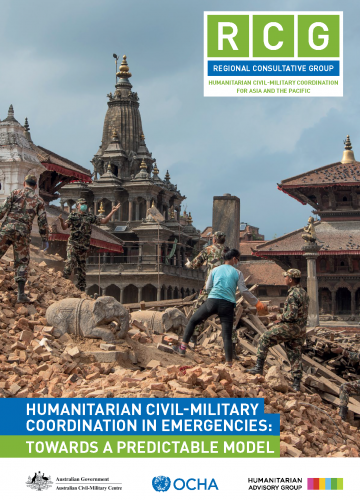
The Australian Civil-Military Centre (ACMC), the United Nations Office for the Coordination of Humanitarian Affairs, Regional Office for Asia and the Pacific (ROAP), and the Humanitarian Advisory Group (HAG), launched Humanitarian Civil-Military Coordination in Emergencies: Towards a Predictable Model today.
The publication outlines key civil-military coordination mechanisms in the region and how these are activated during disaster response, in line with regional and global frameworks and guidance. It provides clear guidance to policy makers, practitioners and those involved in disaster preparedness, on the national coordination architecture and mechanisms for managing international assistance in five priority countries, Bangladesh, Indonesia, Myanmar, Nepal and the Philippines.
The publication is intended for regional organisations, national disaster management authorities, government agencies with a role in disaster management and international disaster assistance, military, civil defence and police organisations, the Red Cross and Red Crescent Movement, NGOs and UN agencies.
This is a living document and will be regularly updated to ensure that it continues to reflect operational realities in the five priority countries.
The publication is linked to the work of the Regional Consultative Group (RCG) on Humanitarian Civil-Military Coordination for Asia and the Pacific. This multi-stakeholder, regional forum established in 2014 brings together humanitarian, civilian and military actors involved in preparing for and responding to disasters in the region. The overall RCG objective is to strengthen the linkages between preparedness and response, within a framework where these are treated as two phases of one cohesive approach rather than as discrete processes.


